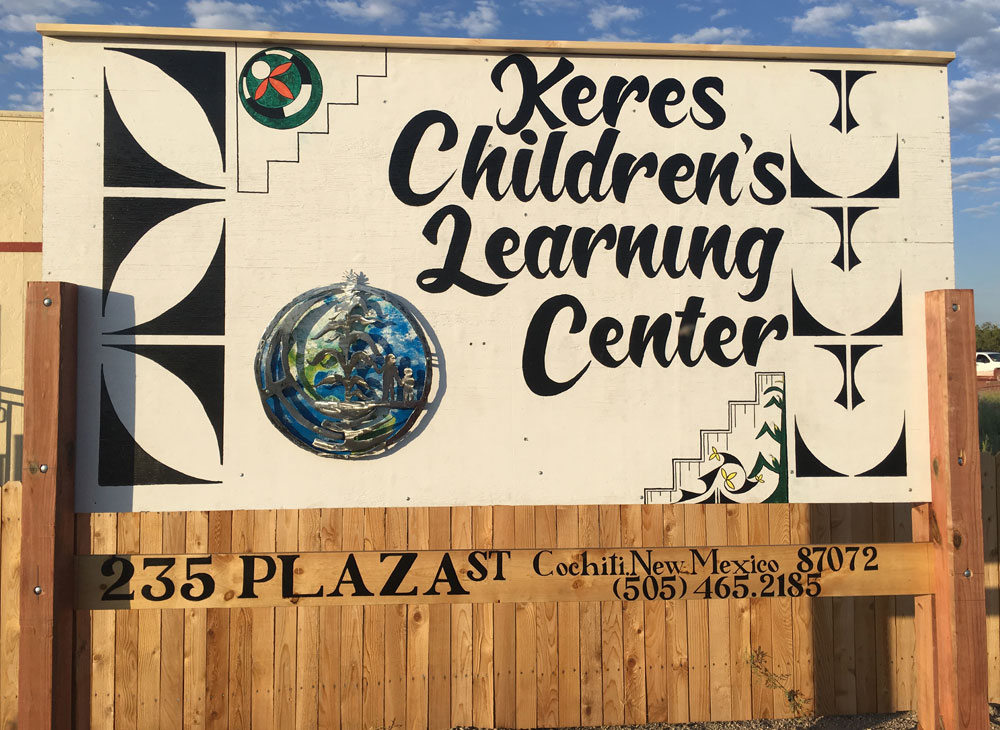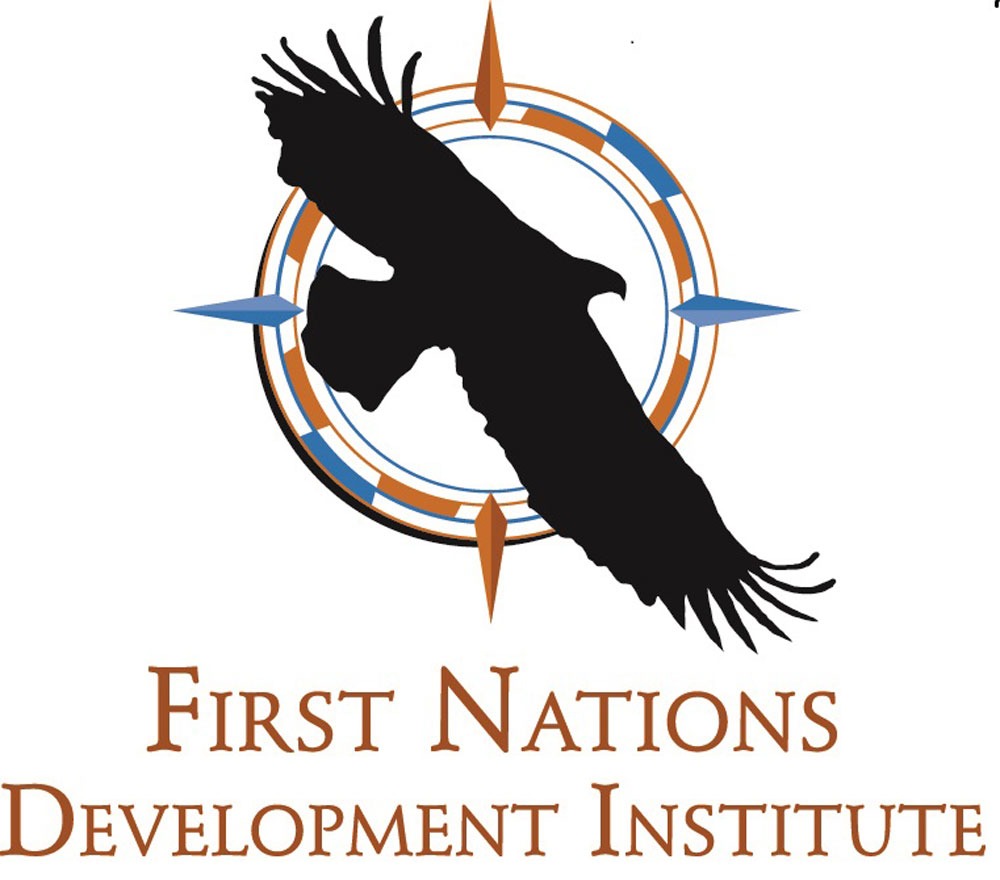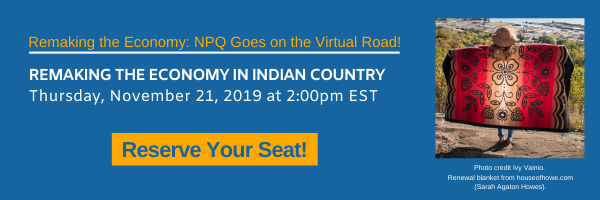
This article is the fifth in a series that NPQ, in partnership with the First Nations Development Institute, is publishing this fall. It features Native American activist writers who highlight the practices of community building in Indian Country and identify ways that philanthropy might more effectively support this work.

Philanthropy often declines to fund indigenous initiatives because of a supposed lack of sustainability. Yet Native Americans have lived on this continent for thousands of years. Is that not sustainability? To change its practices, philanthropy must share power. This includes acknowledging historical truths surrounding the sources of foundation wealth, which often has included acquiring financial assets through the theft of Native land and resources.
In March 2006, I began to create an indigenous language immersion school in the Pueblo of Cochiti, New Mexico. As a necessary first step, we (our board of directors and cofounder) asked for the blessing of the Cochiti Tribal Council to create the Keres Children’s Learning Center (KCLC). With their blessing and partnership, we started to fundraise and worked to become a 501c3.
The mission of KCLC is to reclaim our children’s education and honor our heritage by using a comprehensive cultural and academic curriculum to assist families in nurturing Keres-speaking, holistically healthy, community minded, and academically strong students. Early in our development, we decided we would not accept state or federal dollars because that would tie us to English literacy standards. We did not want the teaching and learning at KCLC to be compromised. Our only other real option was to seek funding from foundations.
Our board of directors followed my lead in trying to figure out this new world of philanthropy. Early partners like Gil Sanchez, who then worked at the New Mexico Community Foundation, helped me understand the need for fiscal sponsorship until we received our 501c3 status. The late, beloved Donna Vogel, who was the longtime executive director of the Chamiza Foundation, was our unconditional champion. With the guidance of these two, we began to navigate nonprofit philanthropy, learning all that we could and seeking support. We did this for six years before we actually opened our doors in 2012. Not many foundations wanted to take a “risk” on us, because we were not yet open.
We often felt we were at an impasse. We needed funding to open and to implement our mission, but few wanted to fund us because we were not open and thus could not show how we were implementing our mission. During these formative years, our interactions with foundations showed their lack of trust, interest, and belief in our ambitious goals.
It was difficult to prove to funders that reclaiming the education of our children through a holistic approach grounded in our Keres language was important and urgent. We faced constant rejection. Major foundation directors often asked, “How will you ever be sustainable?” There is irony and trauma in this question for indigenous communities, who have a demonstrated history of strength and resiliency.
The vast assets accumulated by most US foundations have roots in stolen land and resources, benefitting from the very policies that were meant to destroy us. I remember thinking during those early years how uncomfortable it was to ask for financial assistance to support the return of our indigenous language, a precious lifeway that was deliberately and strategically taken from us. This is not an attempt to guilt-trip foundations about their legacy, but rather a fact of history that we must acknowledge.

Our neighbors in Canada are demonstrating the power of truth, healing, and reconciliation. In fact, in all parts of the world where indigenous people have been displaced, murdered, and otherwise mistreated, we collectively need to navigate truth, healing, and reconciliation. When we can journey towards these ways of being, we can then seek and achieve justice for our ancestors, ourselves, our children, and those who will inherit the planet from us.
During KCLC’s formative years, I experienced serious cognitive dissonance around fundraising and the future of our nonprofit. I often felt ashamed to think that people would want to invest in our dream to create a more holistic education process for our people. Mainstream education systems have failed our children for centuries, in many cases due to their deliberate design. I would talk with foundation officers, with all of their resources, who did not acknowledge this crisis or its causes. Instead, they questioned me about “sustainability,” a term that, like our mainstream education system, is rooted in whiteness.
Sign up for our free newsletters
Subscribe to NPQ's newsletters to have our top stories delivered directly to your inbox.
By signing up, you agree to our privacy policy and terms of use, and to receive messages from NPQ and our partners.
Healing from these interactions took a lot of prayer and faith. Dialogue with other supporters and community members helped us counter these conversations with what sustainability means for us at KCLC and as Indigenous people. Sustainability is caring for one another, sharing with one another, loving one another, and respecting one another as humans. Sustainability means extending that same care, sharing, love, and respect to the living world around us.
Sustainability is our language, which has survived because our people are innovative and resilient. Sustainability is being supported in our efforts from the community. Our ancestors have lived on these lands since time immemorial. We are still here reclaiming the education of our children and grounding that education in our language and culture, so that our children will continue to thrive for generations to come. That is sustainability.
The experiences above have plagued many Native people engaged in nonprofit and community development. We often feel ashamed and traumatized for thinking that our community goals to heal and thrive on our own terms do not match nicely with the broader goals of philanthropy (or people in philanthropy).
The narrowing philanthropic focus on things like return on investment, large-scale numeric impact, replication, and generalization dismisses sustainability in Native communities. We are focused on nurturing the spirit, mind, body, physical, and spiritual environments. The differences in how we envision community-based work and sustainability may explain why Native-led nonprofits receive less than six-tenths of one percent of large foundation dollars.
How do we create a more conducive environment for Indigenous fundraisers?
First, foundations would be well served to look within and ask themselves the following: Where do our values come from? How was the wealth of our foundation created? What communities were disrupted in the creation of our foundation’s wealth? Who holds power in our foundation? What do we call the organizations that we fund? Why do we call them that?
We can understand the origins of wealth and community disruption in the US by asking and truthfully answering these questions. The answers will highlight the need for foundations to invest in communities, places, and issue areas that were systematically disrupted—often in ways that ultimately supported the compounded growth of foundation assets. It is my hope that reflection on these questions will lead to the creation of philanthropic coalitions that seek to learn from and visit with indigenous nonprofit leaders and communities.
There have been a great number on conversations of power-sharing in philanthropy. Sharing power starts with truth, including historical truths surrounding the creation of foundation wealth. Sharing power starts with acknowledging that wealth is not neutral, and that we need to unpack the values associated with how wealth was created but also how it is given. Do those values match the goals of communities? Power sharing acknowledges the need to do and support work with us and not for us.
At KCLC, many of the foundation partners we work with are the exception and not the rule. I am grateful for many of our foundation partners for their openness and our ability to engage in deep and honest conversations.
My grandfather always told us to give and do for people with love and an open heart. Whether you give money, your time, your talents, your knowledge, your hands to help, blessings will be returned in other ways…and that is wealth.









